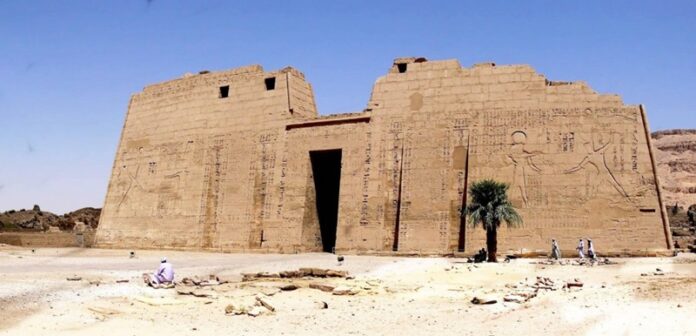Sunlight filters through the clerestory windows or apertures in the eastern chamber of the inner sanctuary of Amon-Ra within the Temple of King Ramses III. These strategically placed openings are designed to illuminate specific areas at certain times of the day, symbolizing the connection between the earthly realm and the heavens, allowing for the flow of sacred energies or the observation of important celestial events in religious practices.
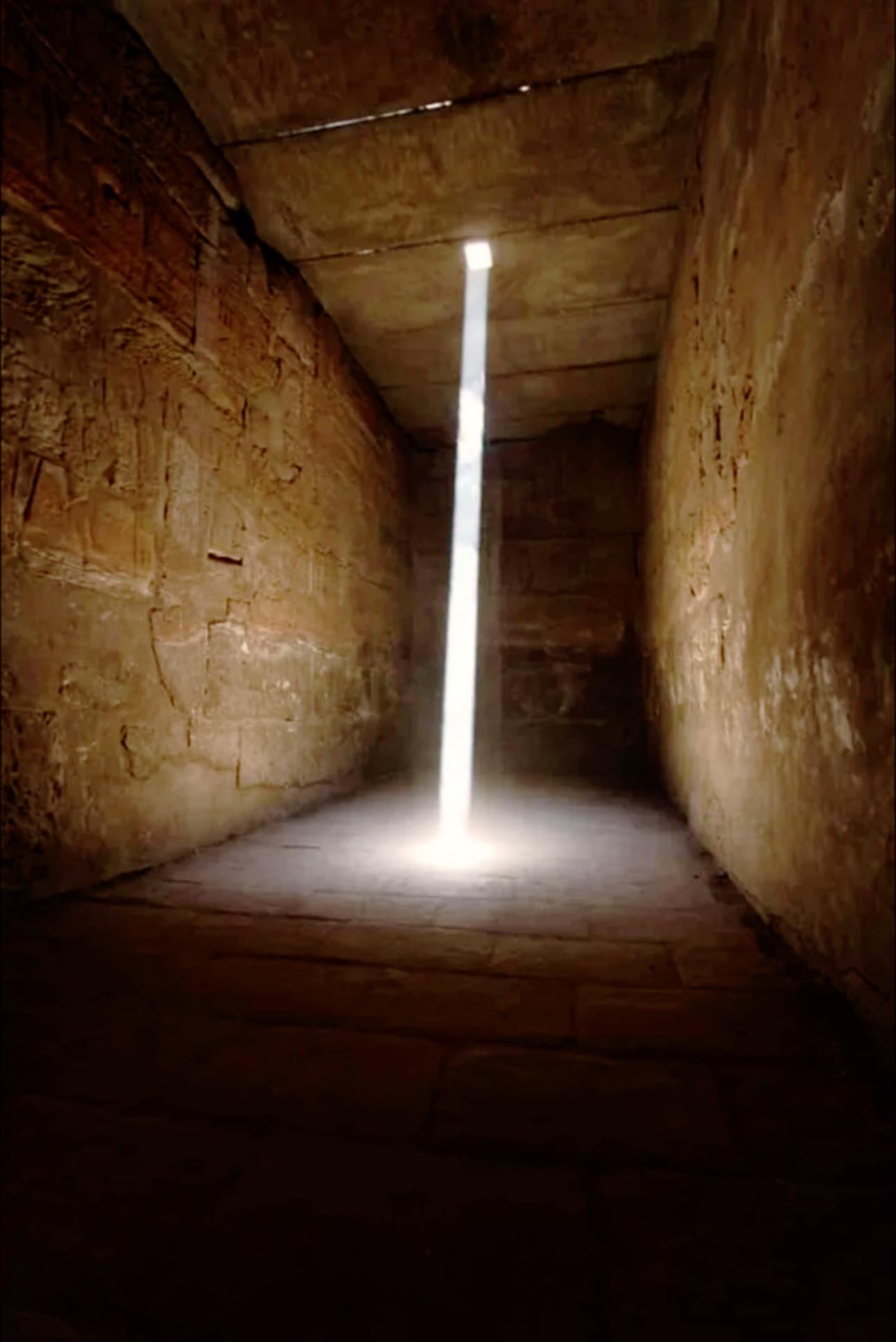
In the heart of Western Thebes, amidst the shifting sands and eternal whispers of ancient history, stands the temple of Ramses III at Medinet Habu. This grand edifice, the last of the great funerary structures crafted in this historic region, remains the best-preserved monument on the west bank of the Nile.
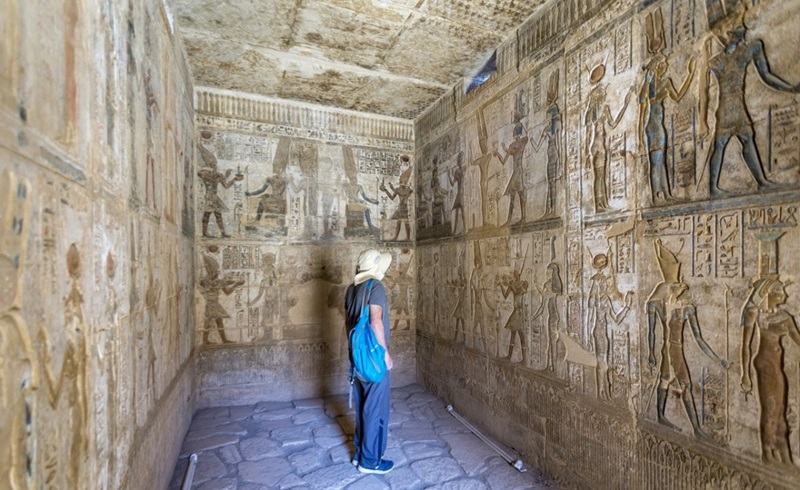
The story of its creation begins with Ramses III, a pharaoh whose ambition was to echo the glory of his predecessor, Ramses II the Great. Inspired by the architectural marvels of the Ramesseum, Ramses III chose a sacred piece of land on the southern border of the Theban necropolis for his temple.

This land was steeped in myth and legend, believed to be where Amon once appeared and where the Hermopolitan Ogdoad, a powerful group of eight deities involved in the creation of the world, had once rested.

Approaching the temple, visitors are greeted by three majestic gates—two facing west and one to the east. The eastern gate, exceptionally well-preserved, stands as a testament to its unique architectural style, reminiscent of Middle Eastern gatehouse entrances known as migdols.
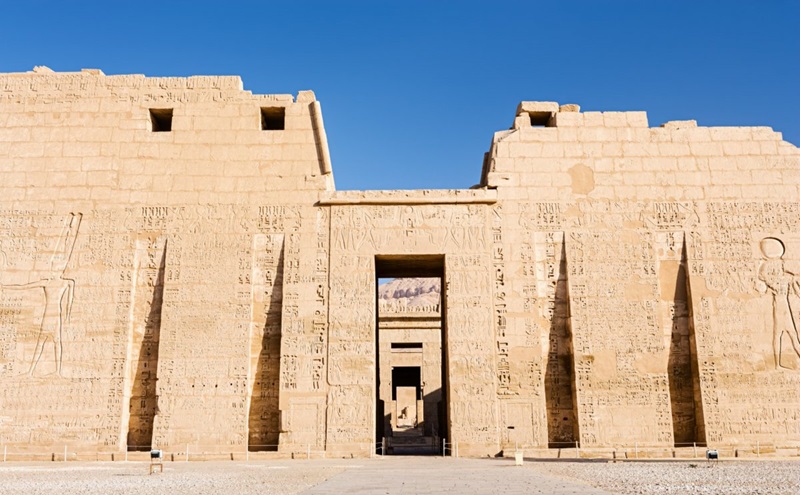
These structures, typically forming part of defensive fortifications, here were transformed into decorative towers. The Theban Gate, however, was more than just a fortification; it was part of a regal palace complex where the ruler would reside during festive seasons.
As one steps into the temple grounds of Medinet Habu, the air feels thick with the echoes of ancient ceremonies. The first courtyard, with its magnificent decorations and elaborate reliefs, narrates the tales of Ramses III’s victories. These stories are etched into the stones, meant to immortalize the pharaoh’s triumphs over his adversaries. Moving deeper into the palace, one finds the northern wall adorned with the Window of Appearances—a special nook from which Ramses III would preside over religious rituals.
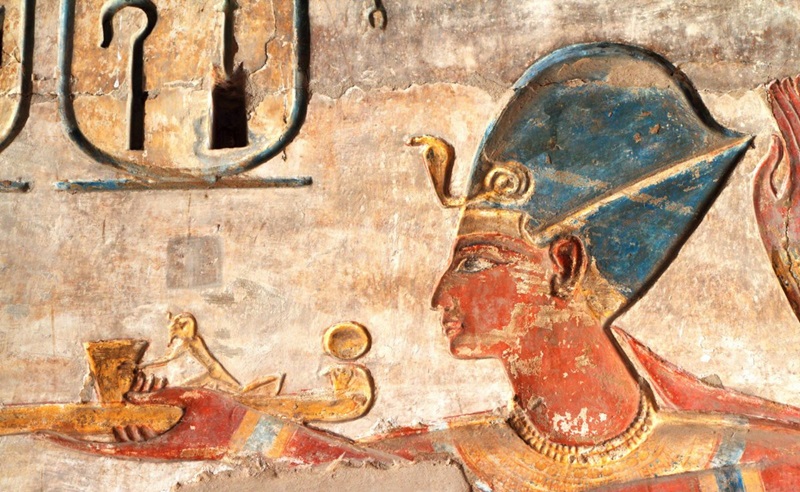
After the pharaoh’s death, his spiritual presence continued to grace the palace. The throne room’s back wall featured a false door, known as the “Ka door,” which allowed Ramses III’s Ka—a vital element of his soul—to pass through and participate in ongoing sacrificial rites, maintaining an eternal bond between the divine and his people.
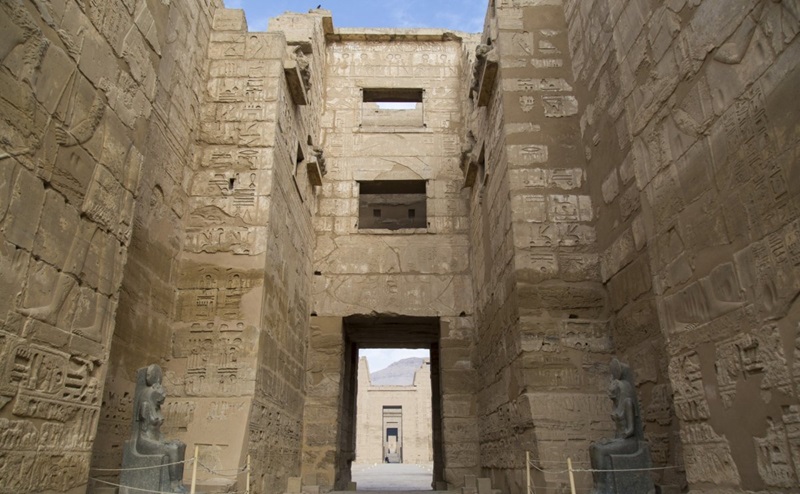
Beyond the spiritual and the ceremonial, the second courtyard of the temple served as a vibrant venue for feasts in honor of Min, the god of harvest, and Sokaris, ruler of the state of the dead. These celebrations were part of the Beautiful Festival of the Valley, a time of joy and reverence. Yet, this historical jewel was not spared the ravages of time and change. In later centuries, Egyptian Christians, known as Copts, repurposed the sacred space, sometimes destructively, to erect their churches, altering its ancient facade.

Today, Medinet Habu stands not just as a monument to Ramses III but as a living museum, complete with residential areas for priests, administrative buildings, barracks, stables, and lush gardens. Its walls, though scarred by time, continue to tell a story of a civilization that revered both their gods and their rulers, blending the divine with the daily, the mystical with the historical, in a tapestry as enduring as the stones from which it is built.



